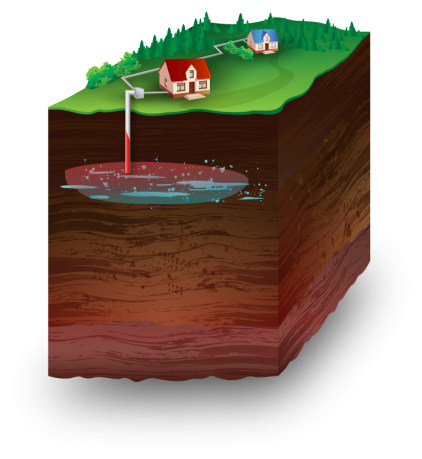
B
Binary cycle geothermal power plant
A geothermal power plant that uses an underground reservoir of hot water to generate electricity. Because the temperature of the water in the reservoir does not exceed 100 °C, in a heat exchanger it transfers its energy to another medium (CFC, propane, 2-methylpropane) which has a lower boiling point and which, after being converted into steam, drives a turbine. The advantage of a binary cycle geothermal power plant is that it can use water from cooler reservoirs and that the fluid from underground does not come into contact with the turbine. The minerals contained in the groundwater thus do not threaten the turbine with deposits or corrosion.
Download more in Free Downloads




